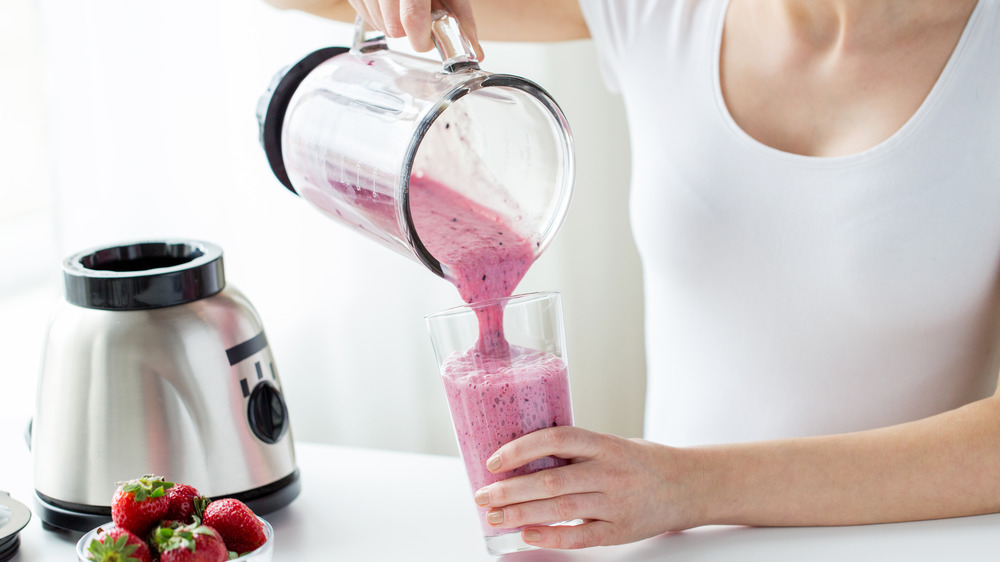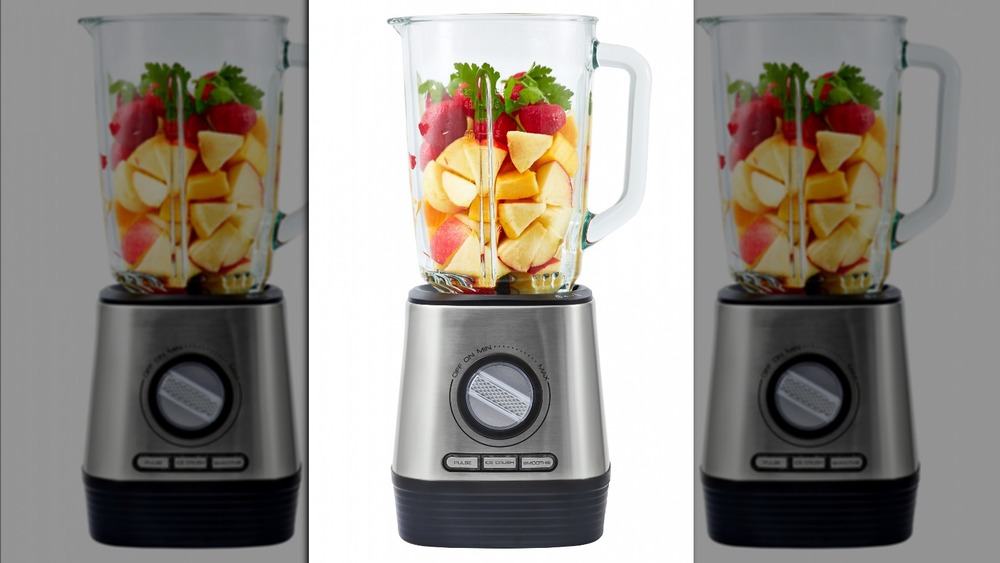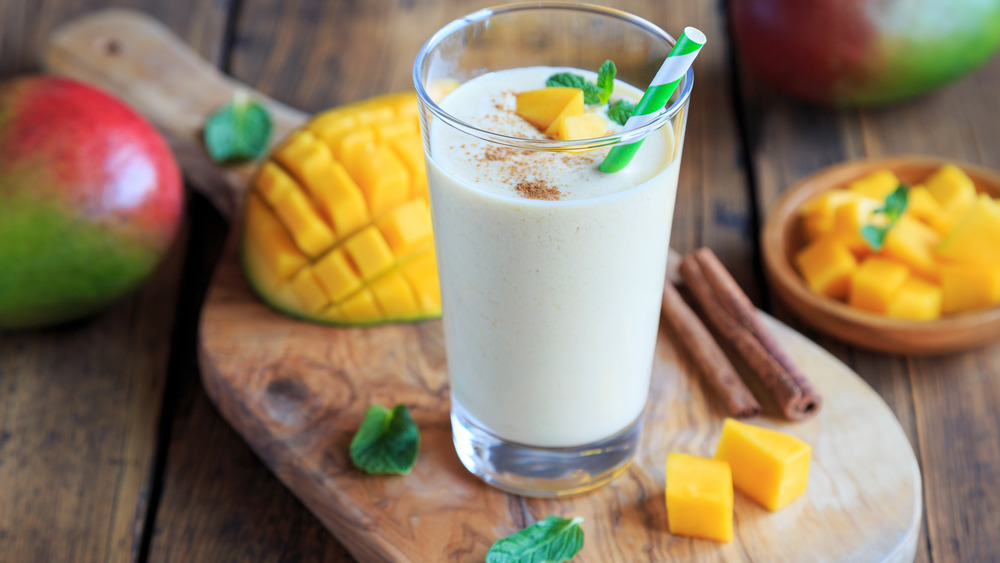Don't Make Another Smoothie Until You Read This
Smoothies, over the course of the last few decades, have been on a journey of change and evolution, as haven't we all? Back in the '70s, they were something that were associated pretty much with health food-eating hippies, the kind of people who not only knew what "macrobiotic" was but actually tried to live according to those dietary principles. Surprisingly enough, though, LeafTV tells us that the first Smoothie King opened not in California but in Louisiana. (This fun fact was brought to you by the letters w, t, and f.)
Somehow, this born-on-the-bayou fad grew legs and hiked on out of the swamp and into near-ubiquity by the dawn of the 21st century when smoothie bars started popping up everywhere. By that time, people were starting to throw bitter green veggies like kale into the mix. Pre-bottled smoothies (some also involving the dreaded kale) started popping up on store shelves, and soon, it was clear that the once-fringe drink had gone totally mainstream, vegetable component and all.
Katie Brown, Ed.D., RDN, the senior VP of sustainable nutrition at the National Dairy Council, is a big smoothie fan, as she says they can "set you up for success in your daily wellness journey," but only as long as you "mak[e] every sip count." If you're not careful about what goes into your smoothie, you could see the calories, sugar, and sodium add up quickly, thus negating all the nutritional benefits.
Start with the right base
Brown says "it's all about the base!" meaning (Meghan Trainor songs aside), that you should start off with a protein-rich one for your smoothies. She suggests using Greek or Icelandic yogurt, as both are thick enough to give the smoothie the necessary texture. She also advises mixing in some dairy milk for added protein and smoothness. Plus, as she tells us, "combining yogurt and dairy milk delivers essential vitamins and minerals to your smoothie base," calling dairy foods "a powerful nutrient powerhouse for your smoothie."
Vitamin A, vitamin D, selenium, zinc, and protein are all nutrients found in dairy products, and Brown says each of these is "essential for healthy immune function and overall wellness." Yogurt, which is a fermented food as well as a dairy product, offers additional health benefits including improved digestion and reduced inflammation. Having a smoothie that includes a double dose of dairy from both yogurt and milk will, according to Brown, "help ensure you're getting nutrients most Americans fall short on daily, like calcium, vitamin D, and potassium, not to mention the probiotics and zinc from the yogurt."
Pack it with fruits and veggies
"Like dairy foods," says Brown, "many people don't eat enough fruits and veggies, either," and she suggests that you "use your smoothie to help fast-track your daily consumption." She says you can add several different types of fresh, frozen, dried, or canned fruits and/or vegetables (if you use this last-named variant, be sure to drain it first) and "easily get two or more servings in one smoothie!"
While Brown does admit that kale and spinach may not be smoothie ingredients everyone will automatically embrace, she thinks you really ought to give them a try. According to her, the dairy base of the smoothie will make the taste "balanced and creamy" and prevent your beverage from tasting like a salad. Instead, she insists that even the darkest of greens (these being the most nutritious ones ) can blend into a yogurt base to become "a delicious flavor and texture explosion."
Experiment with new flavors
Brown advises "keep[ing] the flavor profiles of your smoothies fresh and fun" so they're something you'll drink for enjoyment's sake rather than as a chore. She suggests "sprinkling in nuts or seeds like chia" as well as "interesting herbs or botanicals like spearmint, elderberry or hibiscus flowers, ... ginseng, [and] turmeric," as well as flavorings such as "pomegranate molasses, vanilla, or honey."
Telling us that "the mixology of smoothies has unlimited possibilities for ingredients to make a delicious, nutritious power beverage," Brown shared several of her favorite smoothie starter ideas. She says smoothies can be savory as well as sweet and suggests a chai smoothie incorporating unsweetened chai tea steeped in hot milk or a Mediterranean-style one with tahini, pomegranate seeds, cucumbers, and mint.
If you prefer sweet smoothies, she says, "by using fruit in your smoothie, you will get some of its natural sweetness" and describes a Latin-style smoothie made from milk and fruit sweetened with honey and maybe some vanilla or cinnamon. Yet another smoothie inspiration for her is the Indian lassi, a smoothie-type drink that may be made with fruits like mango or papaya and can be spiced with cardamom, cumin, pepper, and/or mint. One type of smoothie, however, she says should be only an occasional treat: those made with flavored syrups or other sugary add-ins. These high-calorie smoothies, she says, "are best to enjoy from time to time instead of daily."



